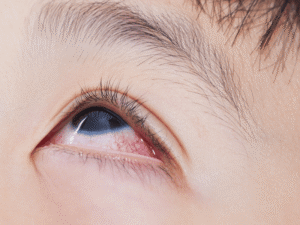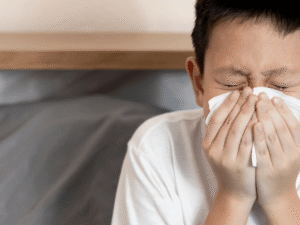What Is a Stye?
A stye is a painful red bump that develops along the edge of your eyelid, often near an eyelash. It forms when an oil gland, gland, or follicle becomes clogged and infected, usually by a bacterial infection. A stye usually causes swelling, tenderness, and sometimes watering of the eye.Lorem ipsum dolor sit amet, consectetur adipiscing elit. Ut elit tellus, luctus nec ullamcorper mattis, pulvinar dapibus leo.
Table of Contents
Types of Styes
External Styes: These form at the base of the eyelash, typically involving an infected hair follicle or oil gland.
Internal Styes: These occur inside the eyelid and are usually caused by a bacterial infection deep in the gland tissue.
Whether internal or external, a stye is a painful red bump that can disrupt your daily activities and eye health.
Signs and Symptoms
Understanding stye symptoms can help in early identification and effective management. Signs of a stye include:
A painful red bump along the eyelid
Swelling around your eyes
Tenderness and tearing
Sensitivity to light
Feeling of a foreign body on the surface of your eye
Styes Aren’t Always Isolated
Sometimes, conditions like styes can occur frequently, leading to recurring styes. If a stye persists or you frequently develop styes, it may point to an underlying cause that requires medical evaluation.
Common Causes of Styes
The most common causes of styes include:
Touching your eyes with dirty hands
Poor eyelid hygiene
Using expired eye makeup
Improper contact lens usage
Conditions such as blepharitis and rosacea
Not removing eye makeup before sleeping
A bacterial infection, usually Staphylococcus aureus, is the main cause of styes. Conditions like blepharitis, a condition that causes inflammation of the eyelids, increase the risk of developing infections like styes.
Are Chronic Styes a Serious Concern?
Chronic styes refer to recurrent or frequently developing styes that may indicate more than just surface irritation. An eye exam by an eye care specialist is often required to uncover underlying causes such as:
Chronic inflammation
Blocked glands
Rosacea or blepharitis
Habitual touching your eyes
Wearing contact lenses without proper hygiene
People with chronic styes may be susceptible to infections and must practice proper eye care.
How to Treat and Prevent Styes
At-Home Treatment for Styes
The most effective at-home treatment includes:
Applying a warm compress to the stye several times a day
Gently cleaning the eyelid with warm water and baby shampoo
Avoiding eye makeup and contact lenses during infection
Warm compresses to the stye can drain the stye and reduce discomfort. Avoid trying to pop a stye, as it can cause a stye to spread or worsen.
Medical Treatments
If the stye persists, a doctor may prescribe:
Antibiotic ointments or eye drops
Drainage at a medical center
Oral antibiotic for severe bacterial cases
The appropriate treatment depends on whether the stye is internal or external and its frequency.
How to Prevent Styes
Here’s how to help prevent and reduce the risk of recurrent styes:
Wash your hands before touching your eyes
Practice regular eyelid hygiene
Clean or replace eye makeup regularly
Disinfect or replace contact lenses
Avoid rubbing your eyes with dirty hands
Schedule an eye exam to check for eye conditions
Proper eye care and hygiene habits can significantly prevent styes and support long-term eye health.
Frequently Asked Questions
. What can cause a stye to form?
Poor eyelid hygiene, touching your eyes with unclean hands, and old eye makeup can all cause styes.
2. How can I get rid of a stye quickly?
Apply a warm compress several times a day, keep the area clean, and avoid squeezing or popping it.
3. Can makeup or contact lenses cause styes?
Yes. Dirty eye makeup or contact lenses can potentially cause infection and increase the risk of developing a stye.
Conclusion
Styes are usually minor, but chronic styes or recurrent styes can be more than just a cosmetic issue. Keeping your eyelids, hands, and contact lenses clean, along with regular eye care, can significantly reduce the risk of getting styes. If you’re struggling with developing styes frequently, consult an eye care specialist for the appropriate treatment and to improve your overall eye health.



